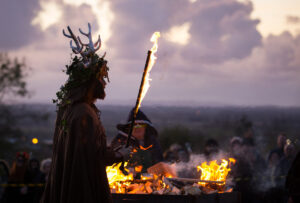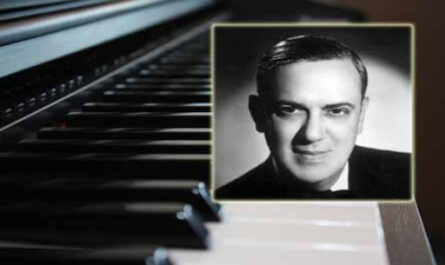Halloween is thought to date back more than 2,000 years to Samhain, a Celtic New Year’s Day that fell on November 1. Demons, fairies, and spirits of the dead were thought to walk the Earth the night before when the separation was thin between the worlds of the living and the dead.
The Celts lit bonfires and set out gifts of food, hoping to win the favor of the spirits of those who had died in the past year. They also disguised themselves so the spirits of the dead wouldn’t recognize them.

Samhain later transformed in the seventh century into All Saints’ Day or All Hallows’ Day as Christian leaders co-opted pagan holidays. But the night before continued to be observed with bonfires, costumes, and parades under the new name All Hallows’ Eve—later «Halloween.»
European immigrants then brought Halloween to the United States, and the celebration became popular in the 1800s, when Irish American immigration exploded. Their folk customs and beliefs merged with existing agricultural traditions, meaning Halloween dabbled in the occult, but stayed grounded in the fall harvest. Over the years, the holiday became a time for children to dress up as the ghosts their ancestors once feared.
How trick-or-treating became a tradition
But how did those Celtic traditions evolve into one of children trick-or-treating in costumes for fun and candy—not for safety from spirits?
According to the fifth edition of Holiday Symbols and Customs, in as early as the 16th century, it was customary in England for those who were poor to go begging on All Souls’ Day, and children eventually took over the custom. At the time, it was popular to give children cakes with crosses on top called “soul cakes” in exchange for prayers on your behalf.
Lisa Morton, author of Trick or Treat: A History of Halloween, traced one of the earliest mentions of typical Halloween celebrations to a letter from Queen Victoria about spending Halloween around a bonfire in Scotland in 1869.
“Having made the circuit of the Castle,” the letter said, “the remainder of the torches were thrown in a pile at the south-west corner, thus forming a large bonfire, which was speedily augmented with other combustibles until it formed a burning mass of huge proportions, round which dancing was spiritedly carried on.”
Morton writes that people in the American middle class often were anxious to imitate their British cousins, which would explain a short story printed in 1870 that painted Halloween as an English holiday celebrated by children with fortune-telling and games to win treats.
However, Morton writes that it’s possible that trick-or-treating may be a more recent tradition that, surprisingly, may have been inspired by Christmas.
A popular 18th- and 19th-century Christmas custom called belsnickling in the eastern areas of the U.S. and Canada was similar to trick-or-treating: Groups of costumed participants would go from house to house to perform small tricks in exchange for food and drink. Some belsnicklers even deliberately frightened young children at houses before asking if they had been good enough to earn a treat. And other early descriptions say that those handing out treats had to guess the identities of the disguised revelers, giving food to anyone they couldn’t identify.
In the 19th century, “tricks”—such as rattling windows and tying doors shut—were often made to look as though supernatural forces had conjured them. Some people offered candy as a way to protect their homes from pranksters, who might wreak havoc by disassembling farm equipment and reassembling it on a rooftop. By the early 20th century, some property owners had even begun to fight back and lawmakers encouraged communities to keep children in check with wholesome fun.
These pranks likely gave rise to the use of the phrase “trick-or-treat.” Barry Popik, an etymologist, traced the earliest usage of the phrase in connection with Halloween to a 1927 Alberta newspaper article reporting on pranksters demanding “trick or treat” at houses.
How trick-or-treating grew popular
Trick-or-treating became widespread in the U.S. after the Second World War, when rationing ended and candy was once again readily available. The rapid development of suburban neighborhoods where it was easier than ever for kids to travel from house to house also fueled the rise of the tradition.
In the 1950s, Halloween imagery and merchandising started to reflect that popularity, and the holiday became more consumerist. Costumes went from simple, homemade attire mimicking ghosts and pirates to mass-produced costumes of beloved TV and movie characters.
As trick-or-treating’s popularity rose, adults found it far easier to hand out individually wrapped candies than apples, nuts, and homemade goodies. Candy had first made its appearance in the 1800s at American Halloween parties as taffy that children could pull, and candy is now solidified as the go-to “treat.”
By the mid 20th century, Halloween tricks of old had all but disappeared. Children just wanted candy and homeowners with their house lights on gave it to them. Those that preferred to avoid candy-giving entirely kept their lights off.
(With information from National Geographic)




